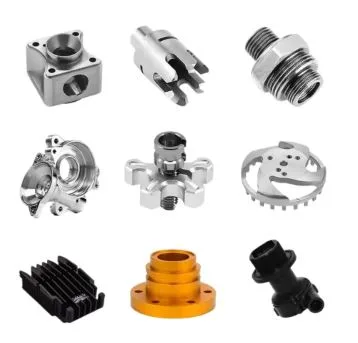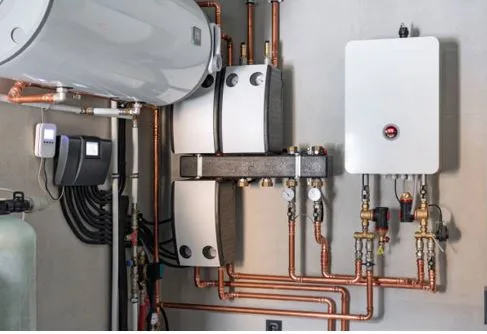Aluminum CNC Machining Service: Custom Solutions for Precision Parts
Aluminum CNC machining is now one of the pillars modern manufacturing rests on, providing CNC machined parts from one industry to another like airlines and automotive electronics. This metal is lightweight yet sturdy, can be easily worked with, and its resistance to corrosion, along with its strength-to-weight ratio, makes it useful for custom fabrication projects. Knowing the benefits and uses of aluminum CNC machining services makes it easier for manufacturers to strategize their production processes.
If you are looking for more information about Aluminum CNC Machining Service – Baetro, go here right away.
This guide aims to fill this important information gap by analyzing the properties of aluminum suited for precision manufacturing, its various applications in different industries, and the aluminum-specific prerequisites that bear significance on the outcome of the project. This knowledge will prove useful for respondents in a variety of ways, whether they are working on prototype developments or preparing for large-scale production.
View China Aluminum CNC Machining Service – Baetro details to get into the details.
Understanding CNC Machining Services
What is CNC Machining?
CNC machining technology precisely fabricates components and parts through the removal of material from a workpiece using a computer-controlled machine tool. This process starts with a digital design file containing specific instructions for the CNC machine, ensuring consistency across multiple production runs.
The operation of the technology is based on pre-set software that controls the movement of factory tools and machines. This automated system eliminates human error and provides exceptional accuracy and repeatability in operations.
The Role of CNC Machines in Manufacturing
Manufacturers equipped with CNC machines read G-code files, which capture the required movement of tools, motion parameters, and cutting sequences. Each instance of reading the G-code translates into a directed mechanical process generated by the machine’s computer.
CNC machine tools allow the realization of complex shapes and high precision features, which is crucial for certain industries. Due to its automated nature, CNC machining helps manufacturers achieve consistent quality, lower the time required for production, and reduce labor costs.
Overview of Online CNC Machining Services
The introduction of online CNC machining services has dramatically changed the availability of precision manufacturing capabilities for different manufacturers. These services provided customers with cost benefits due to lower overhead expenses, simplified quoting and ordering systems, and access to international manufacturing networks.
Providers are no longer limited by geography because automated pricing systems price the services instantly. With this level of accessibility, businesses of any size, ranging from startups building a prototype to established firms needing large production runs, have precision manufacturing accessible.
Benefits of Using Aluminum in CNC Machining
Mechanical Properties of Aluminum Alloys
The mechanical properties of Aluminum alloys are exceptional, making them optimal for applications requiring CNC machining. Some alloys can reach strengths comparable to steel, achieving an excellent strength-to-weight ratio, which is critical in many applications.
Aluminum’s ductility aids in complex forming operations without resulting in cracks or failures. During machining operations, aluminum helps reduce tool wear due to overheating, and its thermal conductivity helps dissipate heat. Different alloys provide varying combinations of strength, corrosion resistance, and machinability which is desirable in certain applications.
Benefits of Machining Aluminum Components
Aluminum’s characteristics greatly enhance the machinability, making it one of the most efficient materials in CNC operations. The ease in which the alloys can be processed means that they can be cut using sharp tools, producing high surface quality with very little need for secondary processing. Unlike more difficult-to-machine materials, aluminum can be processed at significantly slower feed and cutting speeds without impacting machining times.
Unlike other materials, aluminum has a natural oxide layer that provides some corrosion resistance. For many applications, this removes the need for protective coatings, which is useful for outdoor applications or equipment expected to be exposed to moisture. Additionally, parts made from aluminum are lightweight, which reduces shipping costs and is beneficial for applications that seek weight reductions.
Surface Roughness and Geometric Accuracy in CNC Machining of Aluminum Components
With aluminum CNC machining, one attains optimum surface finishes with minimum processing steps. Tolerances commonly observed are ±0.005 inches for general purposes and ±0.001 inches for more demanding applications. Accuracy of dimensions is maintained due tothe stability of the material throughout the machining sequence.
Mirrored surfaces can be achieved on some advanced aluminum alloys with the appropriate cutting tools and machining conditions, reinforcing the functional properties of aluminum in items that also require optical refinement.
Common Applications of Aluminum CNC Machining
Industries That Utilize Custom Aluminum Parts
The aerospace industry has a significant reliance on aluminum CNC machining for aircraft components, engine parts, and the structural sections of an aircraft, which undergo stringent safety inspections and performance tests. The material’s high strength-to-weight ratio makes it essential for applications where reducing weight increases fuel efficiency and performance of the aircraft.
The automotive industry makes use of aluminum CNC machining for features such as engine parts, chassis, and transmission components, whose industry standard demands high processing speed, accuracy, and mass production. Aluminum is used in modern cars since it aids in meeting the fuel economy standards without compromising on the vehicle’s structural rigidity.
In the industry of electronics, CNC machining is used for aluminum alloys which are utilized for making the housings for various electronic instruments, connectors, and also as a heat dissipater in the form of sinks. In electronic appliances, a material with a good thermal conductivity is required to assist in heat control, making aluminum an ideal choice.
Examples of Machined Aluminum Components
Aluminum components can be divided into different categories based on their degree of difficulty. In aerospace work, items such as wing brackets and landing gears come to my mind that, in addition to having tight tolerances and certified materials, require precision. These pieces commonly obtain intricate shapes and have many surfaces that undergo precise machining at close tolerances.
Other examples include aluminum engine blocks, transmission housings, and suspension components, which are extensively employed in the automotive industry. These components are subjected to high loads and bustle in strenuous work temperatures. Aluminum’s capacity to be machined in the form of walls that are thin and full of internal contours raises its value.
Electronic applications involve sophisticated heat sinks, precisely mounted enclosures, connector housings that require surface finishes that are smooth, and housings that require sleek and polished edges. Moreover, the smooth finishes enhance the item’s aesthetic value.
Aluminum’s ability to undergo stringent machining processes enables seamless compliance with regulatory benchmarks, enhancing cost-effective manufacturing. For instance, biocompatible surfaces are crucial for clinical-grade components, and CNC machining ensures the accuracy of constituent features and dimensions.
Integrated circuits can be effortlessly protected using aluminum CNC housings for circuits and also aids in the attenuation of excess weight in circuit component CNC encapsulation and CNC armor component machining. These cases highlight aluminum’s angle of mobile versatility.
Premium products from consumer electronics boasts enhanced performance that aesthetically complements the technical functions of the item. Aluminum CNC serves crucial parts for machined housings and is also pivotal in maintaining the required strength whilst bearing seamless press fits and mechanical alignment.
Comparison with Alternative Machining Materials
CNC Machining Aluminum vs. Steel and Other Metals
The advantages of aluminum compared to steel in CNC machining are numerous. Aluminum components can be machined at higher speeds and feeds, which minimizes production time and reduces tool wear. Furthermore, lower density of aluminum translates to reduced shipping costs when compared with steel for larger aluminum components.
Steel does offer some advantages with regard to strength, but requires more aggressive machining parameters, leading to increased tool wear. Increased hardness of steel also poses a challenge during machining due to work hardening, which complicates the manufacturing process.
Stainless steel is superior to carbon steel in corrosion resistance, but its work hardening characteristics complicate stainless steel machining. Specialized tooling and cutting parameters need to be used in order to achieve satisfactory results.
Advantages and Disadvantages of Different Machining Techniques.
Conventional turning and milling are capable of machining aluminum efficiently. However, they do not provide the precision and reproducibility of CNC-operated machines. Manual machines may work well for prototype development but they do not scale up for mass volumes.
Unlike traditional machining, CNC machining excels in aluminum part turning as it provides greater precision, surface finish quality, and repeatability. Automation in CNC machining reduces labor costs, along with eliminating human error factors associated with manually operated machines.
While casting and forging may be more economical for large-scale manufacturing, they do not achieve the precision tolerances offered by CNC machining. These other methods also require costly tooling that would be unjustified for low-volume production.
Selecting the Appropriate Material for Your CNC Project
Choosing materials for CNC projects requires an assessment of the part’s mechanical properties, environmental factors the component will encounter, and the part’s machining characteristics, which impact production costs. The mechanical features, coupled with aluminum’s corrosion resistance, make it a good candidate for many applications.
Cost consideration includes the price of materials, time deemed necessary for machining, and other processes required afterwards. Aluminum’s excellent machinability tends to lead to lower overall manufacturing costs, even though sometimes aluminum can be more expensive than some alternatives.
Integrated use parameters like operating temperature, load limits, and exposure to varied environments dictate whether aluminum’s features are suitable for the intended purpose. Its thermal expansion characteristics and electrical conductivity can be beneficial or detrimental as superar materials or further designing could bring considerable advantages.
The Future of Aluminum CNC Machining Services
Emerging Trends in CNC Machining Technologies
The development of sophisticated CNC technologies continues to broaden the scope of processing aluminum. The use of high-speed machining allows for faster removal rates of material while preserving surface finish standards. Advancements such as these lower manufacturing time and boost productivity for components made from aluminum.
The use of automation in CNC machining services covers robotic part loading, automated tool changers, and quality inspections done in real-time. These advancements not only reduce the amount of manual work needed, but also improve consistency in operations when it comes to aluminum machining.
Combining CNC methods with additive manufacturing creates hybrid processes that interweave the advantages provided by both technologies. These methods still retain precision and surface finish associated with traditional machining while allowing intricate internal geometries to be formed.
Effect of 5-Axis CNC Milling on Productive Efficiency
Five axis CNC milling technologies have changed the landscape of machining aluminum by allowing intricate geometries to be done during one setup. This technology eliminates excess setup time, enhances dimensional accuracy, and achieves what was previously not possible with 3-axis machining.
This innovation permits the approach of cutting tools on aluminum workpieces from various angles, thereby shortening the length of the tool while also improving its stiffness. As a result, these aluminum components yield better surface finishes and tighter tolerances.
In the context of 5-axis machining, enhanced production efficiency has been observed in terms of decreased cycle times, fewer operational setups, and longer tool life. All of these refinements aid in cost-effective manufacturing and lead time delivery for aluminum CNC projects.
Advancements in Custom CNC Machining Processes
Through better planning and optimization of design, custom CNC machining processes are being revolutionized with the advent of digital manufacturing technologies. Modern toolpath generation for aluminum machining takes into account the material and precise cutting tools using sophisticated CAM software.
Immediate feedback of machining conditions using real-time monitoring systems enables automatic control for optimal cutting, especially in aluminum machining, where adjustable cutting conditions can be tailored for maximum efficiency.
With the aid of predictive maintenance technologies, machine learning algorithms can be utilized to foretell equipment requirements, thus ensuring no unforeseen standstill. This technology helps maintain quality and schedule consistency for aluminum CNC projects.
Maximizing Success with Aluminum CNC Machining
Machining services that utilize aluminum CNC technology are useful and beneficial in many industries for precision machining. Aluminum is ideal for manufacturing aerospace components and consumer electronics due to its strength, lightweight properties, and ease of machining.
An aluminum part’s success stems from its properties, the machining parameters chosen, and the service providers utilized. The advancements in CNC technologies and the development of aluminum alloys will allow more opportunities for precision manufacturing in the future.
Make sure to include production volumes, required tolerances, surface finish needs, and any other specific requirements for the aluminum machining center. Work with aluminum CNC machining providers who understand the material’s fundamentals so that their processes can be tailored to the final product. Strategic planning alongside choosing the right provider will yield high-quality components that are cost-effective.





